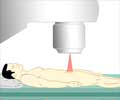Researchers say four drugs used to treat HIV infection can inhibit a retrovirus recently linked to prostate cancer and chronic fatigue syndrome
Researchers at Emory University/Atlanta Veterans Affairs Medical Center and the University of Utah have shown that Four drugs used to treat HIV infection can inhibit a retrovirus recently linked to prostate cancer and chronic fatigue syndrome.
The results were published on April 1, 2010 by the journal PLoS One.The findings suggest that if XMRV (xenotropic murine leukemia virus-related virus) is proven to be a cause for prostate cancer or chronic fatigue syndrome, those illnesses may be treatable with drugs already approved for treating HIV.
Discovered in 2006, XMRV has been detected in some prostate cancer patients' tumor biopsies by several investigators. However, its precise role in driving prostate cancer is unclear. A recent report (from the Whittemore Peterson Institute in Nevada) detected XMRV in a majority of chronic fatigue syndrome patients, but these results have not been confirmed by other laboratories.
"Not all studies that have looked for XMRV have been able to detect it in prostate cancers or in samples from chronic fatigue syndrome," says Ila Singh, MD, PhD, associate professor of pathology at the University of Utah School of Medicine. "We will need to see the results of clinical trials before these drugs can be used in a clinical setting."
Singh and Raymond Schinazi, PhD, DSc, professor of pediatrics and chemistry at Emory's Center for AIDS Research and the Atlanta VAMC, and colleagues teamed up to test 45 anti-HIV compounds, some of these discovered by Emory researchers, and other antiviral compounds against XMRV in cell culture.
The most potent drug against XMRV was raltegravir, produced by Merck and sold under the commercial name Isentress. The FDA initially approved raltegravir in 2007 only for persons whose HIV infection was resistant to other drugs, but in 2009 its approval was expanded to all HIV infected persons.
Advertisement
Besides raltegravir, three other compounds – another integrase inhibitor and AZT and tenofovir DF, two reverse transcriptase inhibitors – also inhibit XMRV replication. This suggests that these drugs could be used together in combination therapy, a particularly effective tactic against HIV that helps prevent the emergence of drug-resistant forms of the virus.
Advertisement
Although both XMRV and HIV are retroviruses, there is little similarity between HIV and XMRV at the protein level. Scientists have been able to show that several retroviruses cause cancer in animals, but only a few retroviruses are known to infect humans: human T-lymphotropic viruses 1 and 2, HIV, and now XMRV. Singh and Schinazi are now investigating the development of resistance in XMRV to raltegravir and other drugs.
Singh led a recently published study that demonstrated the presence of XMRV in 27 percent of prostate cancers examined, with the virus more likely to be found in the most-aggressive tumors. XMRV may promote cancer by integrating into the host cell DNA and warping the cell's regulation of its own genes.
Source-Eurekalert
RAS















